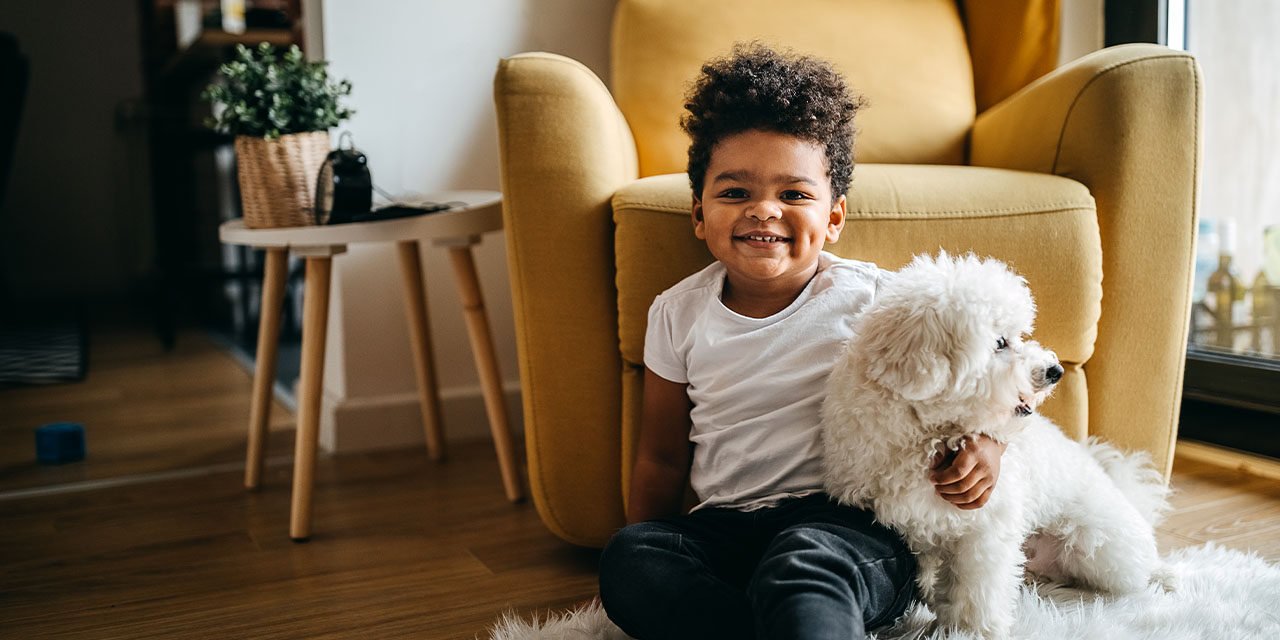What do you think about when you imagine the perfect home for a dog? A large, sprawling farm? Or a spacious home with an expansive fenced-in yard? What about an apartment?
Many people would hesitate to bring a dog home to an apartment, due to the fact that apartments typically offer less square footage and don’t allow for much room to run. But it’s totally possible for your pup to lead a happy and healthy life in an apartment! There are just a few things to keep in mind for this to happen.
Keep reading for tips on how to take care of your dog in an apartment.
Make sure dogs are allowed in your apartment complex.
Regardless of how much space you have in your apartment and the surrounding area, it’s ultimately up to your landlord whether you can bring a dog home or not. Check your lease before making plans to bring home that new furry family member.
If your landlord does allow pets, a pet fee may be tacked onto your monthly rent or charged as an annual fee.
Choose a breed that is well suited to apartment life.
When you’re thinking about what kinds of dogs can thrive in an apartment and which breeds aren’t as well suited, you might assume it comes down to size. Many people think small dogs do better in an apartment setting than larger breeds.
But contrary to popular belief, the size of the dog doesn’t have as much to do with their preferred environment as much as their energy level does! Small dogs that are very high in energy might not love living in an apartment, while a much larger but more calm breed would thrive.
Prep your apartment for house training.
If you’re bringing home a new puppy who isn’t yet potty trained, consider how easy it will be to achieve house training in an apartment setting. Training your dog to do their business outside requires frequent trips outdoors, especially in the early days. It’s not always easy to get outside quickly and frequently if you live several floors above ground level.
Luckily, there are workarounds to this! If your apartment has a balcony, you could set up an emergency “patio potty” for your dog. This shouldn’t be your dog’s primary means of going to the bathroom, because regular trips to a grassy area should still be part of their regular routine. But a patio potty could come in handy in case of emergency, like during inclement weather or in the middle of the night.
Make sure your dog gets plenty of exercise.
Many apartments have just as much living space as houses, if not more! But in several cases, apartments don’t give your dog much room to run indoors. If your dog’s indoor living area is on the smaller side, be sure to counteract that by getting them outside as often as possible.
Your dog’s activity level will depend on several factors: age, breed, temperament, etc. Most dogs require at least one walk a day at the least. Be sure to give your dog plenty of opportunities to get their energy out to keep them from feeling restless or acting out while at home.
If you have a dog but haven’t yet chosen an apartment, take the surrounding neighborhood into consideration. Are there plenty of sidewalks where you can take daily walks? Is there a dog park within walking distance? These factors are very desirable traits for dog owners!
Desensitize your dog to apartment life.
Living in an apartment can be different from living in a house for many reasons. The biggest difference for your dog will probably be the fact that, in an apartment complex, you live in very close quarters with your neighbors. This means your pup will be bombarded with a variety of sounds, sights, and smells on a daily basis.
For some dogs, living so close to other people and pets can be overwhelming. Help to desensitize your dog to apartment living by introducing them to your neighbors (and their pets) whenever possible. The more familiar people are, the less likely your dog will be to bark at them!
If barking is a concern, consider leaving the TV on or using a sound machine while you’re gone. The background noise can help drown out the sound of footsteps, doors, and other dogs barking, thus helping your dog to feel more at ease.
Stay up-to-date on your dog’s vet visits.
As a result of living in close proximity to other families and their animals, your dog may be at higher risk of contracting fleas or illness from neighboring pets. Staying up-to-date on vaccines, checkups, and preventive treatments can help you avoid external parasites, kennel cough, and heartworms in dogs.
Take measures to ensure you get your security deposit back.
The last thing to keep in mind when raising a dog in an apartment is that, if you’re renting, there is typically a security deposit at stake. If damage is inflicted on your floors, walls, or doors during the course of your lease, your landlord can choose to keep some or all of that deposit when you move out.
There are some steps you can take to protect your apartment, even in the face of an unruly puppy who is still potty training and learning their boundaries. Give your dog plenty of chew toys to gnaw on so they don’t chew up your doors or carpets, and lay down rugs in high-traffic areas to protect against muddy paw prints or potty accidents.
Be patient when transitioning to apartment living.
If you’ve never raised a dog in an apartment, or if you are transitioning from a home to an apartment, some aspects of the adjustment may be overwhelming. It can be difficult to get used to taking several flights of stairs for a potty break, and not having a fenced-in yard to let your dog run free.
But there is no reason your pup can’t thrive in an apartment setting! With a little bit of patience and these tips in your back pocket, your dog can stay healthy, happy, and safe no matter where you are living.
This article was written by guest writer, David Cruz. David has been a freelance writer for more than five years, and a dog owner for more than a year. When he’s not writing about pet health or responsible ownership, he’s traveling with his Samoyed, Bosco.















